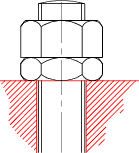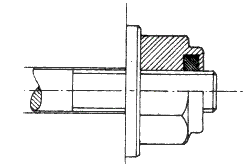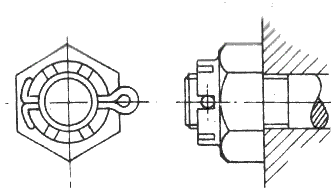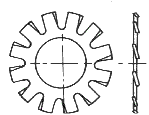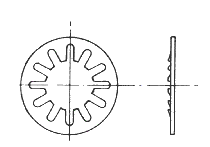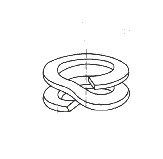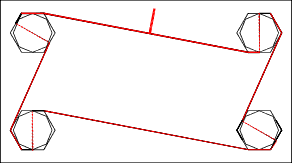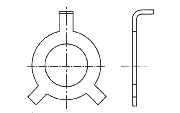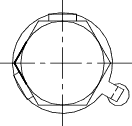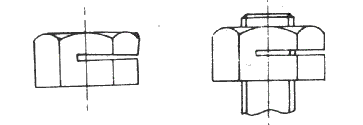| These Pages include various standards. To confirm the status of any standard, identify the replacement standard if it is obsolete and/or purchase the standard please use. It is also possible to become a BSI member and obtain copies of the Standards at much reduced prices. |
Screws Index Page...
Screw Locking and Retaining Methods
|
Introduction The purpose of a locking device is to prevent the loosening of mating components
which may be operating in conditions of varying stress, temperature or vibration.
The effectiveness of the locking device is often critical to the safety of the system..
Friction /Positive Locking The overall safety and reliability of a machine is significantly affected by the judicious selection of appropriate locking devices. Review of various Locking methods Note: A number of the locking methods fix the nut or bolt head to the adjacent surface.
If these are used on nut + bolt applications please note that locking the nut /or bolt head does
not necessarily lock the other component (bolt /or nut) It should be noticed that the thin lock_nut /jam nut is below the normal nut..
The proper connection is made by tightening the jam nut snugly first, then tightening the
upper nut so tightly that the stress on the jam nut is reversed as the bolt strains.
The locknut principle can also be used to fix the nut in any position on the male screw thread and therefore
create a shoulder..
This is a nut with a plastic or fibre collar set into the nut which is an interference fit on the male thread. On assembly the male thread forces its way through the collar and the resultant friction restricts the tendency to unscrew. These nuts are not as effective for locking if used more than once.
These nuts have slots in the top face. The nuts are fully tightened and a hole is drilled through the male thread to align with one of the slots. Split cotter pins are then inserted through the nut and the male thread and bent to hold it in position. This is a very effective and positive locking device but is expensive to install. It can also be difficult to install due to poor accessibility.
These are low cost items with questionable reliability generally considered only
suitable for non-critical consumer
items.
These are low cost items with questionable reliability generally considered only suitable for non-critical consumer
items.
Wire locking is a very low cost and entirely effective method locking nuts
or hex headed screws and bolts screwed into surfaces. It is mainly
used when a number of screws have to be locked. Holes are predrilled
in the items being locked and when all of the items have been fully tightened
the wire is threaded through the holes and the ends are twisted to prevent loosening..
The routing of the wire is such that it prevents the screws
from unscrewing.
Tab washers are thin metal washers designed with two or more tabs which project from the outside diameter. The washer is placed below the head of the bolt or the nut and following tightening one or two tabs are bent upwards against the flats of the bolt/nut head. The remaining tab is bent down into a suitable hole in the surface being fastened or over a local edge, if one is available.
Locking plates are manufacture items made from thin plates with with hexagon shaped holes sized to fit snugly over the hex heads to be locked. The plates have holes used for fastening the plate in place onto the surface being clamped using small screws which are locked..
A slot is machined into a nut and the nut is deformed to compress the slot as shown below. When the nut is tightened onto the male thread it forces the nut back to its original geometry. The thread system is locked by the built in friction..
A method of locking screw threads is available based on using a special thread form on
the female part of the system. This provides for very localised interference
such that the thread works normally but is self locking. This system can be provided
in the form of nuts or threaded inserts. The threaded inserts are based
on the Helicoil principle. .This is a modern system with significant advantages.
A modern trend is to use engineered adhesives. These are simply applied to the threaded component prior to assembly. The type of adhesive selected will depend on the need for a permanent assembly and an assembly which requires dismantling.. The most well known manufacturer of these systems are Henkel Loctite.. There are a significant number of advantages to this method and few disadvantages. The disadvantages include.
There are a large number of other methods not discussed above. Most of these methods are based on the principles identified. Locking systems not yet listed in these notes include..
|
Sites Providing Information On Bolt Loading
|
|
Screws Index Page...
Please Send Comments to Roy Beardmore
